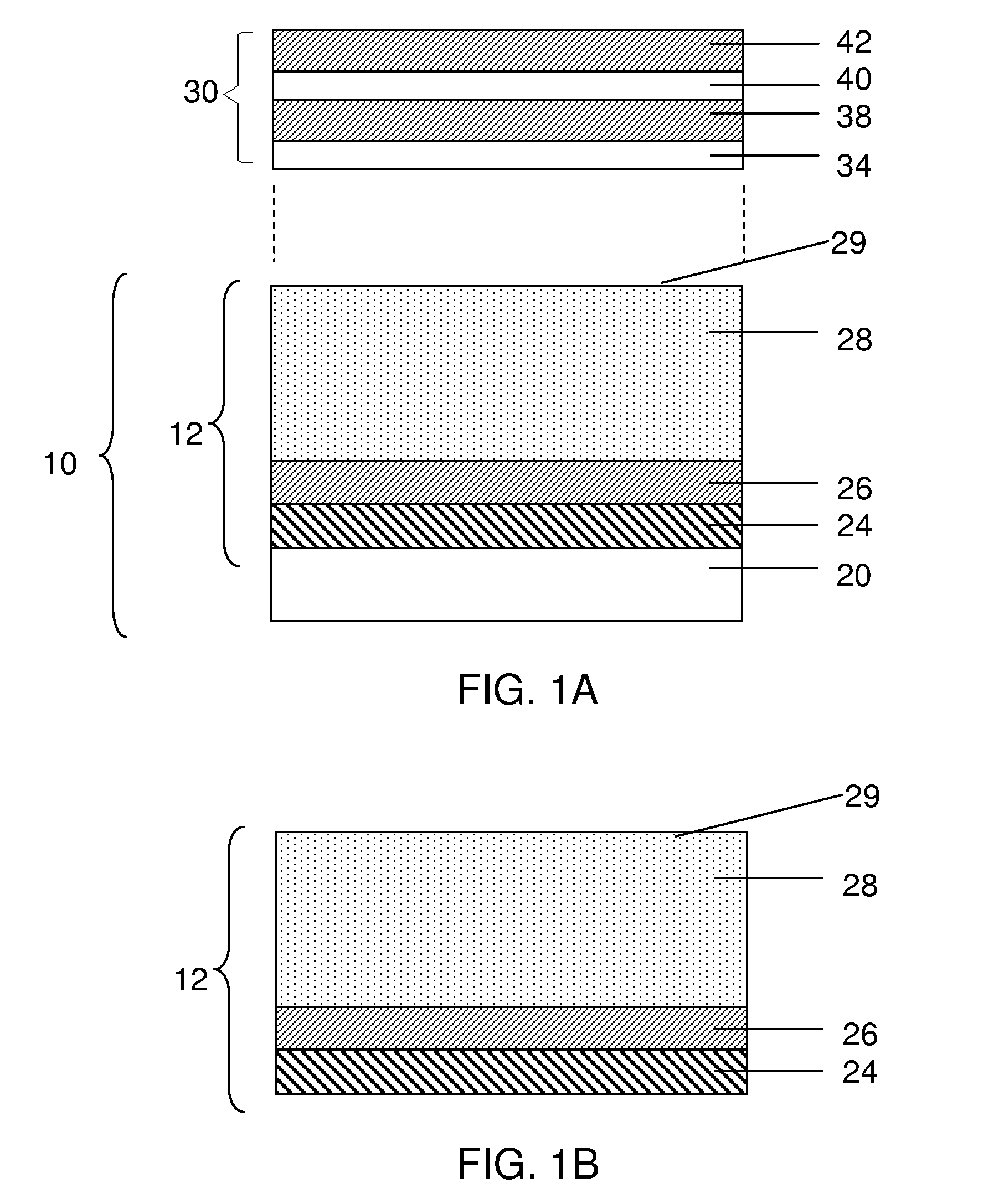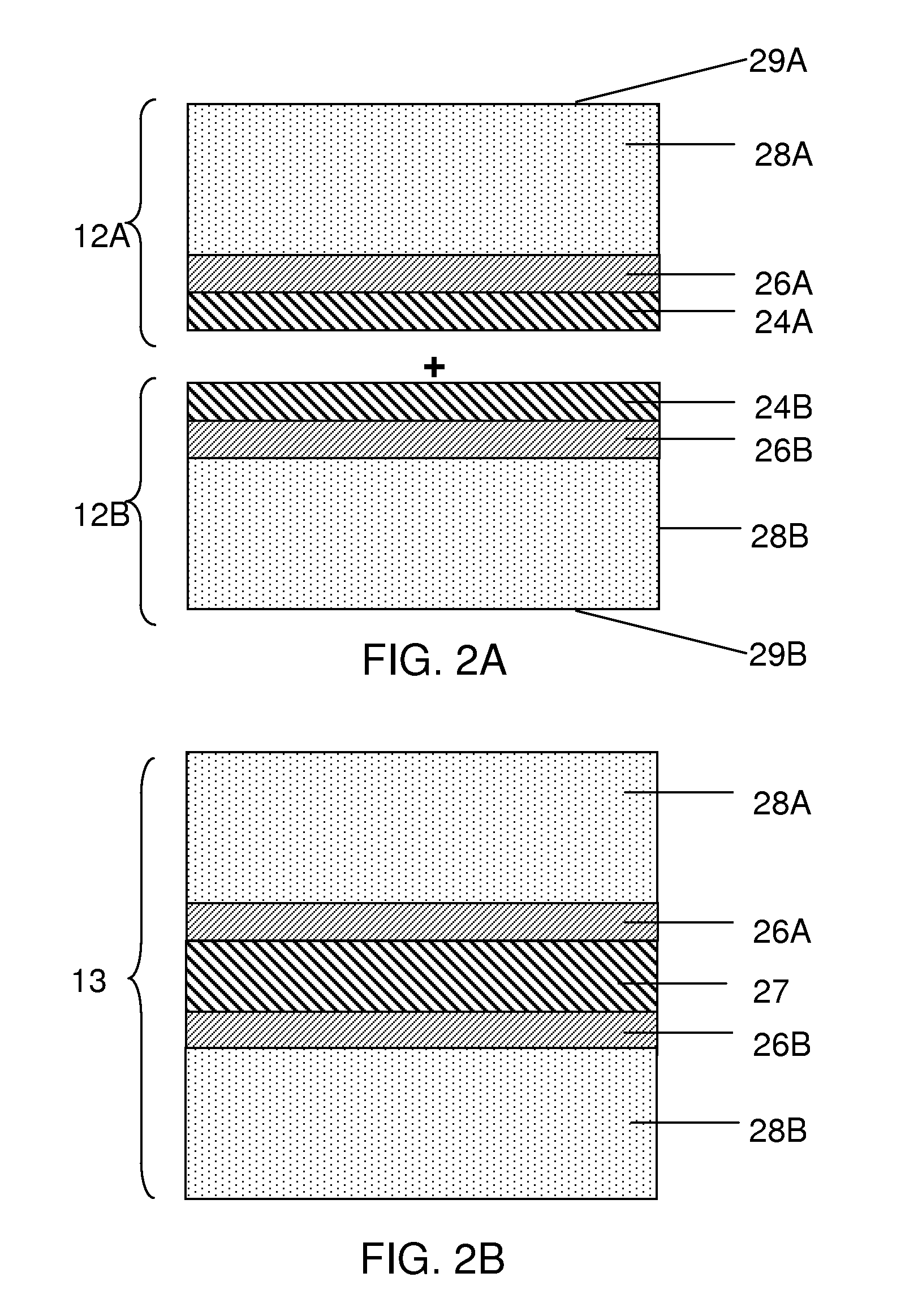Release system for electrochemical cells
a technology of electrochemical cells and release systems, which is applied in the field of electrochemical cells, can solve the problems of little or no function of electrochemical cells, and inability to achieve significant improvement of performan
- Summary
- Abstract
- Description
- Claims
- Application Information
AI Technical Summary
Benefits of technology
Problems solved by technology
Method used
Image
Examples
example 1
[0148]This example describes a process for forming a release layer, and a process for fabricating an anode of an electrochemical cell using the release layer.
[0149]In a 5 L 3-necked flask equipped with a mechanical stirrer, condenser, and a thermometer, 28.3% by weight isopropyl alcohol (IPA) was added and stirred at room temperature. To this, 5.5% by weight of Celvol 425 (from Celanese Corp.) polyvinyl alcohol (PVOH) was added, with continued stirring. To this suspension, 66.2% by weight distilled water was added. The resulting suspension was heated to a temperature between 65° C. to 75° C. until all PVOH pellets were dissolved completely. The suspension was stirred continuously for an additional hour at this temperature. The stiffing solution was allowed to cool to room temperature slowly. Once cooled, the PVOH formulation was tested for percent solids, density, and viscosity. The cooled PVOH formulation was then filtered into a secondary container to remove any particulate contam...
example 2
[0156]This example describes a process for forming a release layer, and a process for fabricating an anode of an electrochemical cell using the release layer.
[0157]In a 5 L 3-necked flask equipped with a mechanical stirrer, condenser, and a thermometer, 27.7 wt % isopropyl alcohol (IPA) was added and stirred at room temperature. To this solution was added 7.5% by weight of Celvol 310 (from Celanese Corp.) polyvinyl alcohol (PVOH) with continued stirring. To this suspension, 64.8 wt % distilled water was added. The suspension was heated until it reached a temperature of between 65° C. and 75° C., and until all PVOH pellets had dissolved completely. The solution was stirred continuously for an additional hour at this temperature. The stirring solution was allowed to cool to room temperature slowly. Once cooled, the release formulation was tested for percent solids, density, and viscosity. The cooled formulation was then filtered into a secondary container to remove any particulate con...
example 3
[0164]This example describes a process for forming a release layer, and a process for fabricating an anode of an electrochemical cell using the release layer.
[0165]In a 5 L flask equipped with a mechanical stirrer and a thermometer, 74.8 wt % distilled water was added and stirred at room temperature. To this solution was added 6.5% by weight of Celvol 425 PVOH (from Celanese Corp.) with continued stiffing. The suspension was heated to a temperature between 90° C. and 95° C. until all PVOH pellets had dissolved completely. The solution was stirred continuously at this temperature for an additional hour. The stiffing solution was allowed to cool to room temperature slowly under agitation. To this suspension was added 18.7 wt % IPA slowly under agitation. The cooled formulation was then filtered into a secondary container to remove any particulate contaminants. Once cooled, the PVOH solution was tested for percent solids, density, and viscosity. The resulting mixture was coated onto 76...
PUM
| Property | Measurement | Unit |
|---|---|---|
| Temperature | aaaaa | aaaaa |
| Thickness | aaaaa | aaaaa |
| Thickness | aaaaa | aaaaa |
Abstract
Description
Claims
Application Information
 Login to View More
Login to View More - R&D
- Intellectual Property
- Life Sciences
- Materials
- Tech Scout
- Unparalleled Data Quality
- Higher Quality Content
- 60% Fewer Hallucinations
Browse by: Latest US Patents, China's latest patents, Technical Efficacy Thesaurus, Application Domain, Technology Topic, Popular Technical Reports.
© 2025 PatSnap. All rights reserved.Legal|Privacy policy|Modern Slavery Act Transparency Statement|Sitemap|About US| Contact US: help@patsnap.com



